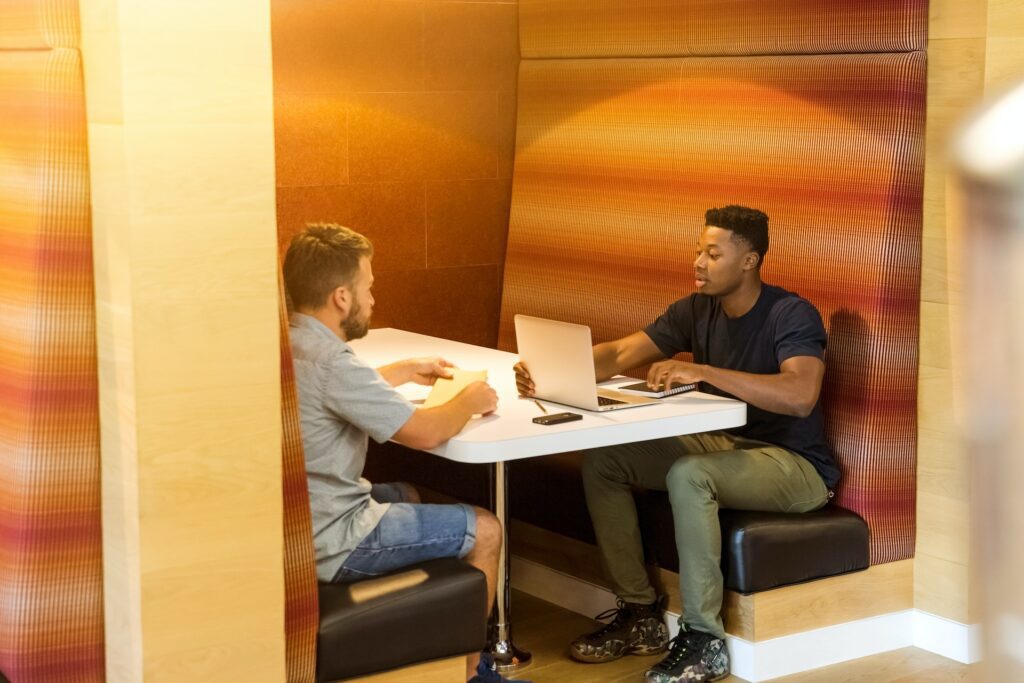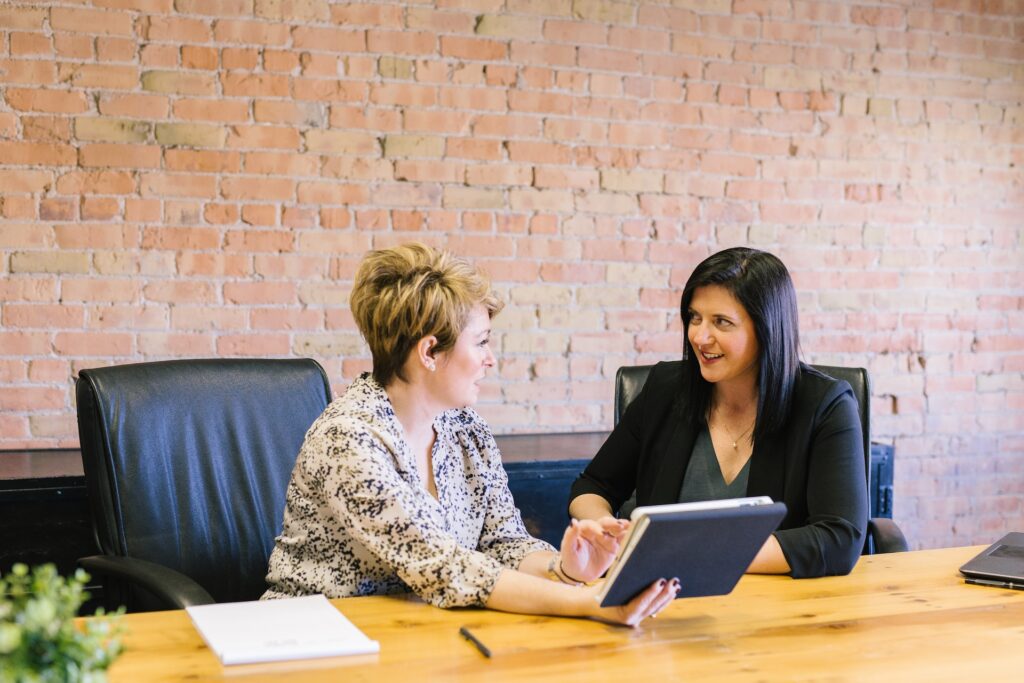12 active listening activities to improve your listening skills
When was the last time you really listened to someone?
Think about the last time you listened to someone without distraction. I mean really listened to someone. No phone, laptop, passer-by, planning for your next meeting, letting your mind wander, or taking notes distracting you. Can you remember just listening with curiosity and empathy?
Now, think about the last time you were really listened to? A time where you felt the other person was 100% focused on what you were saying, considering how you were feeling and just letting you be without interruption or judgment. How did that feel?
We all know how it feels when someone cuts in and finishes your sentence, talks over you, nods disinterestedly whilst reading a message on their phone or interrupts you with annoying, unsolicited advice? While you consider how it makes you feel, is there a chance you might have done the same to someone else?
For some of us – being truly listened to and truly listening to others may occur every day, and that’s amazing. But, for many of us in modern-day life, the number of conversations you have where you are really heard, and you really hear the other person are rare.
With so much to distract us and so much great information at our fingertips, it’s hard to stay in active listening mode for long periods of time – even for those people who are naturally great listeners.

Why do good listening skills matter?
By not listening, you may miss out on valuable information, a chance to learn something new, or an opportunity to avoid awkward miscommunication and upsetting misunderstandings. More importantly, you might be missing out on the chance to truly connect with another person, build trust and allow them to open up.
We are often so used to be listened to superficially that it can be very powerful to have someone actively listening to you.
What is active/deep listening?
Quite simply ‘active listening’ means focusing not just to the words being spoken, it is being aware of the tone, pace, energy and feeling of the speaker. It is considering the metaphors a person uses and why. It is a chance to hear what is being said in the silences as well as in the words.
Active listening means focusing on both verbal and nonverbal messages. Your ability to be an effective listener relies on your ability to notice and understand both types of messages.
I have spent most of my life in a rush. The phrase ‘hurry up!’ has often been on the tip of my tongue. Getting things done quickly was always high on my priority list, and in that, there have been times where I have missed opportunities or learning experiences because I have neglected to really listen.
It has taken a lot of learning (feedback, training, reading and practice) to really hone this skill so that I can provide active, careful listening to my coaching clients. Active listening is a skill that is always ongoing and is something I continue to work on so I can be fully present for not just my clients, but my friends and family too. After actively working on my listening skills throughout my coaching training and my career, I believe that some people are just naturally great listeners. However, the rest of us can still develop this skill with just a few quick tips.
12 Active Listening Activities
“Everyone is interesting if you ask the right questions. If someone is dull and uninteresting, that’s on you!†– Kate Murphy, You’re Not Listening
1. Be attentive
Put your phone on silent (or better still put it away), close your laptop and try to clear your mind with a few deep breaths. If the person is talking for a long time, it is important that you show them you are still listening and interested by engaging with them. This doesn’t mean shifting the focus onto you. Instead, consider eye contact, nodding or with short responses such as yes, I understand, uh-huh, of course, and ok.
2. Stop judging
Embark on all conversations with empathy and openness, allowing the person to feel a sense of trust and respect. People often don’t say what they really think in fear of judgement, and being quick to leap to a conclusion or make a snap judgement can cloud our understanding.
3. Avoid making assumptions
‘I know what you are going to say’. Avoid going into conversations thinking you already know the outcome or that you know what the person is going to say, think, feel or has decided to do.
4. Create eye contact
It sounds simple, but make sure you are keeping eye contact. Don’t allow your gaze to wander off around the room or over the person’s shoulder.
5. Don’t interrupt
You may have a burning question or want to tell them that you ‘know exactly what they mean as it happened to you’. If you do have a relevant question, wait for a natural pause in the conversation.
It is important to remember that we all think and speak at different speeds. Think about your speed versus someone else’s and adjust your pace for more thoughtful communication.
6. Ask open-ended questions
Allow the person to fully explore their thoughts by giving you longer answers and creating a bigger picture. Open-ended questions simply mean the questions that require more than just a one-word answer, for example:
- What about that interested you?
- How did that make you feel?
- What is important for you?
- What’s next?
7. Do not jump to solve
We all have some great advice to give and want to be helpful by sharing our experiences. However, each person’s experience is different. Hold off on comparing how you solved a problem and assuming it will work for them. Remember, sometimes you don’t want the answers, you just want someone to listen!
8. Listen not just to what they are saying but how they are saying it
When listening, remember that the words convey only a fraction of the message. Look out for levels of enthusiasm, the difference between a nervous and a genuine laugh, a subtle sigh, eyebrow raise, or looking away to fully understand their message. Try to feel what the other person is really feeling.
9. Get comfortable with silence
One of the main things I have learned from my coaching sessions and training is allowing time for silence. You will be surprised how much more people have to say if they are given the time and space.
10. Clarify and confirm
Only ask questions that help you understand the speaker. You want to understand, and the best way to do this is to ask questions that look for confirmation. It may help if you feel they are holding something back. Similarly, you can ask if you have understood correctly. This not only shows them that you are listening but also reduces the chance of you missing something.
11. Give feedback
Demonstrate deep listening by showing that you understand the speaker by reflecting their thoughts or feeling. Feedback statements such as “I can see that could be hard for you†and “what a great result†can make a really impact. You want to show that you are still listening and actually understand what is being said.
12. Take notes later
Often, we see note-taking as a true sign of listening. However, by copiously taking notes and spending the whole time looking at your laptop or notepad mean you might be missing out on non-verbal cues and the speaker’s body language. Furthermore, your loud typing may be distracting to the speaker, and they may lose their train of thought.
Instead, it is better to wait until the conversation to write up any notes that you want to refer to later. This is a lesson I wished I had learned earlier.

Get into a listening mindset
As well as considering the listening tips during the conversation, it can help to prepare for your conversation and create a listening mindset that you can apply in any conversation.
To start with
Think about the best listener you know. What do they do well? What questions do they ask?
Think about the type of listener you want to be. How would you like people to describe you? Ask yourself what it would take to get there.
During the conversation
Take time to ask, “How are you?â€. How often do you ask how someone is, wait for the obligatory ‘I am good, thanks’ and then jump into the next conversation?
Try to stop, pause and maybe ask them again ‘are you really ok?’, or asking a more open-ended ‘what’s going on with you?’. With this, you allow them more time to open up and really believe you care about how they are, rather than simply being polite.
Summarise the end of a conversation. This can feel a bit weird (particularly outside of a work-setting) but will show that you have listened and understood the person. Getting used to summarising will show you how well you have listened as well and where you can make improvements in your active listening.
Only ask open-ended questions: Try having a 10-15-minute conversation where you only ask open-ended questions. Reflect on how this affected the conversation. Alternatively, if you find that you slip into asking a yes/no question, consider the different ways you could have asked the question to get a more substantial result.
Afterward
As you develop your listening skills, consider the impact your listening is having on others. For example:
- Are people telling you things they haven’t told others?
- Check that you are not the one always changing the topic
- Listen out for phrases like ‘oh I hadn’t thought about it like that’ or ‘yes exactly- you get it!’
- Are people thanking you for listening?
- Are you learning?
Looking to improve your listening or want to be listened to?
Are you looking to improve your listening skills at work with your team or at home with your family? Perhaps you’re looking for someone who will truly listen to you and help you work towards your goals? As well as being an active listener, I am also a Progress Coach and here to help you get the most out of every situation.
Whether you want to develop your listening skills and understand how active listening can improve both professional and personal relationships or you’re looking to unburden your thoughts, feelings, and concerns with someone that truly gets you, then I’m here for you.
Let’s start listening today by booking a free consultation call.
